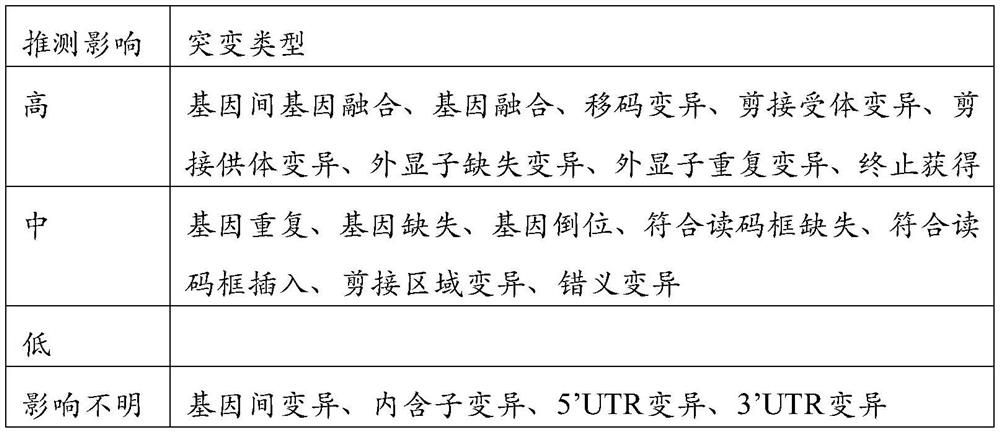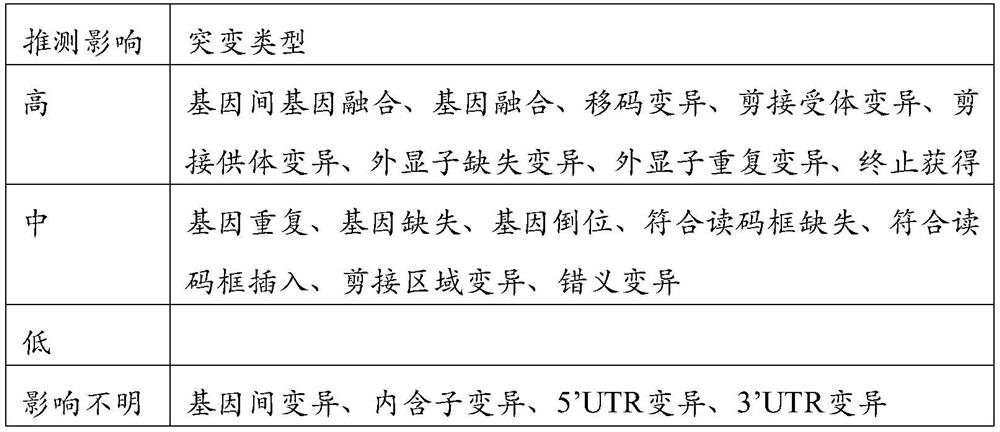Genome structure variation annotation method
A technology of structural variation and genomics, applied in the field of bioinformatics, can solve problems such as methods and systems for structural variation of human genomes that lack structural variation
- Summary
- Abstract
- Description
- Claims
- Application Information
AI Technical Summary
Problems solved by technology
Method used
Image
Examples
Embodiment 1
[0081] Example 1. Exemplary Structural Variation (SV) Detection Methods
[0082] Hereinafter, the markSV method is taken as an example to illustrate the method for obtaining information related to structural variation (SV) in a genomic region.
[0083] 1. Sequence comparison file generation: After the samples to be tested undergo library preparation, they are sequenced on the Illumina sequencing platform to generate FASTQ files. After performing quality control on the FASTQ files, use the comparison software BWA-MEM to compare the FASTQ files with the human reference genome (hg19 / b37) and generate a SAM file. After converting the SAM file into a BAM file with samtools software, the BAM file was used as the input file for subsequent detection.
[0084] 2. Insert length outlier calculation: Read the read length in the BAM file to estimate the parameters of the insert length distribution and the threshold of outliers. If the BAM file contains more than 1 million read lengths, ...
Embodiment 2
[0107] Example 2. Structural variation (SV) annotation process
[0108] 1. Read the structural variation result file
[0109] Read and analyze the analysis results of upstream structural variation detection software (such as markSV software) and extract the information needed for annotation, such as: SV type, orientation, breakpoint coordinates (including chromosome number and genome coordinates) and other information. Supported formats include custom format tsv files and VCF format files.
[0110] 2. Gene and structural information annotation
[0111] Structural variation usually includes two breakpoints, and gene and structural information need to be annotated for each breakpoint. The annotation of gene and structural information is divided into three steps: gene annotation, transcript annotation, and gene structure annotation.
[0112] 2.1 Gene annotation
[0113] According to the chromosome number and genome coordinates of the breakpoint, the gene and related infor...
Embodiment 3
[0176] Example 3. Structural variation annotation
[0177] After the samples go through a series of steps of library preparation, they are sequenced on the Illumina sequencing platform to generate FASTQ files. After performing quality control on the FASTQ files, use the comparison software BWA-MEM to compare the FASTQ files with the human reference genome (hg19 / b37) and generate a SAM file. After converting the SAM file into a BAM file with samtools software, the BAM file was used as the input file, and the structural variation results were analyzed with the structural variation detection software. Take the structure variation result as the input file, use this method to analyze and get the analysis result.
[0178] The analysis procedure was as described in Example 2. The analysis results take a lung cancer FFPE sample as an example. After the sample was analyzed by structural variation detection software, there was a case of interchromosomal translocation (CTX) in the d...
PUM
 Login to View More
Login to View More Abstract
Description
Claims
Application Information
 Login to View More
Login to View More - R&D
- Intellectual Property
- Life Sciences
- Materials
- Tech Scout
- Unparalleled Data Quality
- Higher Quality Content
- 60% Fewer Hallucinations
Browse by: Latest US Patents, China's latest patents, Technical Efficacy Thesaurus, Application Domain, Technology Topic, Popular Technical Reports.
© 2025 PatSnap. All rights reserved.Legal|Privacy policy|Modern Slavery Act Transparency Statement|Sitemap|About US| Contact US: help@patsnap.com


